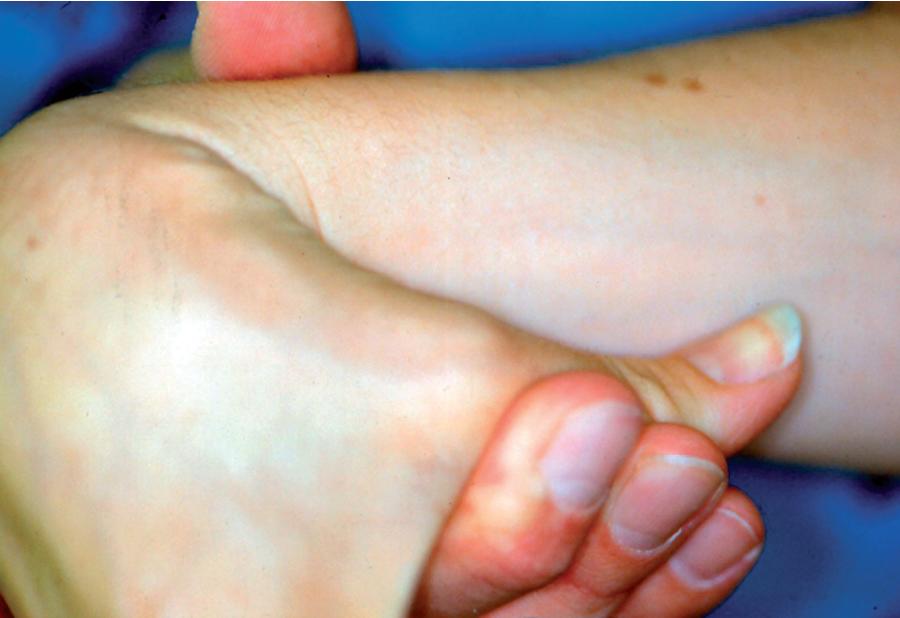Physical Address
304 North Cardinal St.
Dorchester Center, MA 02124
Multidirectional instability (MDI) of the shoulder is a typically atraumatic condition resulting in the ability to dislocate or subluxate the glenohumeral joint anteriorly, posteriorly, and inferiorly. Patients with atraumatic MDI generally have pathologic laxity contributing to their instability. Treatment is initially conservative. This chapter describes the classic surgical treatment for this problem—the open inferior capsular shift.
Operative treatment is reserved for patients who demonstrate persistent symptoms after multiple rounds of a structured rehabilitation program.
Avoid surgery in voluntary dislocators with psychiatric problems for those for whom pain is the only complaint.
Open inferior capsular shift was considered the standard treatment, but arthroscopic techniques have become more frequently used with comparable results.
Thermal capsulorrhaphy should be avoided.
An anterior approach to the inferior capsular shift can provide global stability by decreasing capsular volume. Care should be taken to avoid over-tensioning the subscapularis repair.
A standard deltopectoral approach can be used.
A humeral- or glenoid-based T-shaped capsulotomy is used, with the inferior flap advancement being the key to adequate reduction of capsular volume.
Confirm adequate T-shaped capsulotomy by placing the index finger in the pouch and assessing for extrusion of the finger as the inferior flap is advanced.
Closure of the rotator interval is critical.
Always be aware of the location of the axillary nerve; it is the main neurovascular risk in the technique. It can be avoided by making sure to stay on bone while releasing the capsule off the inferior glenoid.
Ensure adequate capsulotomy by using the index-finger-in-the-pouch technique.
Avoid over-tensioning the subscapularis. This can be avoided by careful closure of the subscapularis tenotomy or by using a subscapularis split technique.
One of the earliest descriptions of multidirectional instability (MDI) was offered by Neer and Foster in 1980, who described this pathologic entity as the ability to dislocate or subluxate the glenohumeral joint anteriorly, posteriorly, and inferiorly. In that series, patients were most symptomatic during mid-range of motion while performing activities of daily living. MDI is described as global shoulder laxity that can be congenital, acquired or both. It is primarily caused by the combination of a redundant inferior capsular pouch, laxity of ligaments about the shoulder, and weakened musculotendinous structures. Congenital conditions that have poly-ligamentous laxity include Marfan and Ehlers-Danlos syndrome. Acquired laxity is often found in competitive athletes who require extremes of shoulder ranges of motion: specifically, gymnasts and swimmers. Patients who develop symptomatic laxity after mild to moderate trauma are likely a combination of congenital and acquired conditions.
Diagnosis is largely by history and clinical examination; however, magnetic resonance imaging (MRI) can be helpful in evaluating the presence and extent of a traumatic component. A simple and useful classification of shoulder instability relies on Frequency, Etiology, Direction, and Severity (FEDS).
By far, the mainstay of treatment is nonoperative management focusing on physical therapy and rehabilitation, including (a) strengthening of peri-scapular dynamic stabilizers and (b) neuromuscular coordination of the rotator cuff, deltoid, and scapula. , Operative management is reserved for those refractory to conservative measures. The open inferior capsular shift, as originally described by Neer and Foster, stabilizes the shoulder by decreasing capsular volume and has been the operative treatment of choice. With advances in arthroscopic techniques, the amount of capsular volume reduction is comparable to that with the open technique. The results of arthroscopic techniques have been promising and as a result, the open procedure is used less frequently but remains an option, especially in those in whom arthroscopic treatment has failed. ,
Most patients are young adults, and 11% to 13% have bilateral symptoms. , It is important to ascertain a family history of similar complaints to evaluate for congenital causes. A psychiatric history (i.e., voluntary or intentional dislocators seeking secondary gain) may preclude individuals from undergoing surgery. , A vague, dull pain and a subjective sense of instability are frequent complaints and are generally provoked by normal daily activities. It is critical to determine whether patients have pathologic hyperlaxity with pain or laxity with pain and instability. Patients with pain and without instability have relatively poor outcomes compared with those who demonstrate instability. Paresthesias in the upper extremity are variably associated with MDI.
The mainstay of diagnosis is physical examination. Basic shoulder examination includes inspection for muscle atrophy, palpation for any point tenderness, and active and passive range of motion to evaluate shoulder biomechanics. As with any complete examination of the shoulder, the physician should also evaluate for cervical spine pathology. Signs of global ligamentous laxity including elbow hyperextension, ability to touch the thumb to the forearm ( Fig. 13.1 ), and patellar subluxation are frequently observed. A Beighton score may be calculated as a quantification of laxity, but this has shown to correlate poorly with MDI. A positive sulcus and/or apprehension sign is common ( Fig. 13.2 ). We also use the load and shift test to quantify both anterior and posterior laxity ( Fig. 13.3 ). This is done by placing the shoulder off the edge of the table in 90 degrees of abduction and applying an anterior and posterior translational force. The result is graded as minimal translation (trace), humeral head translation to the rim (1+), translation over the rim with spontaneous reduction (2+), and dislocation (3+). Findings on the load and shift test may underestimate the true laxity about the glenohumeral joint with the patient awake, as the patient may display guarding. The contralateral shoulder should be evaluated for laxity as well. Additional maneuvers to demonstrate increased translation include the Fukuda test and the jerk test.



Become a Clinical Tree membership for Full access and enjoy Unlimited articles
If you are a member. Log in here